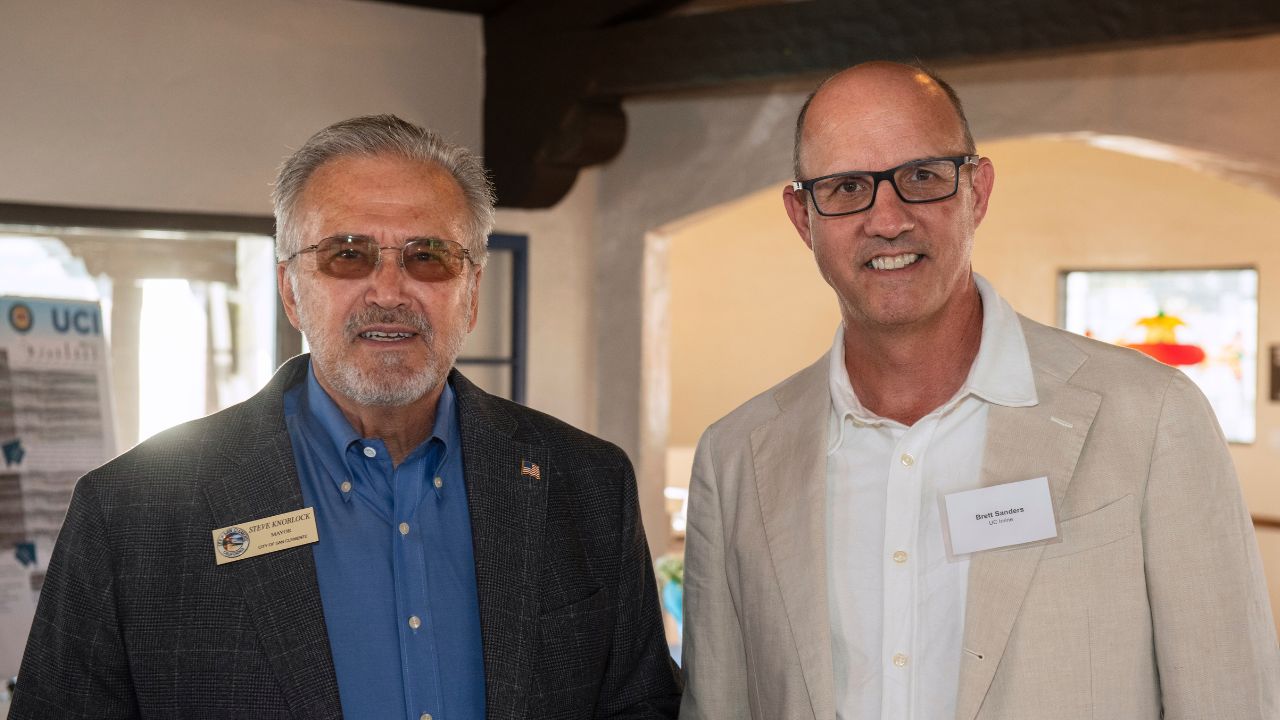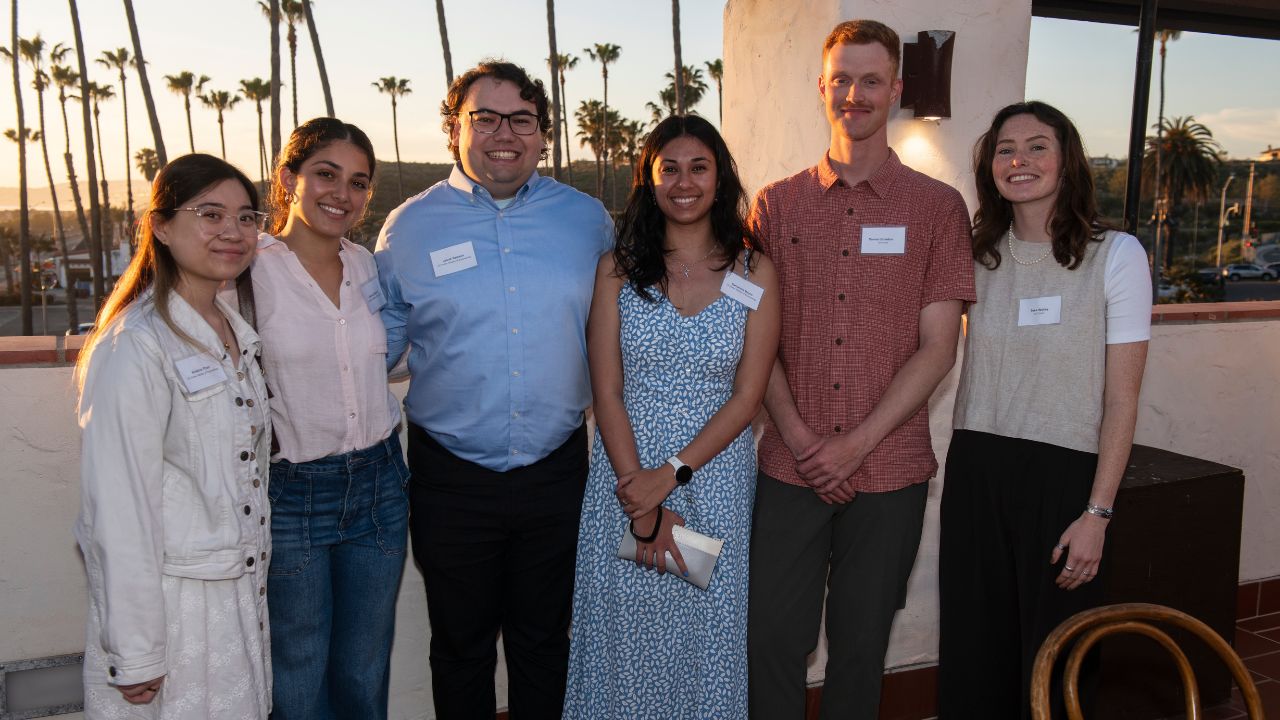UCI Grad Students Present Beach Erosion Solutions to San Clemente Mayor

May 6, 2025 - UC Irvine engineering graduate students are proposing ways to help San Clemente officials deal with beach erosion. Beaches throughout California are thinning, but San Clemente has been particularly hard hit with a disappearing coastline that’s led to temporary closures of its railway in recent years.
The mayor’s office initiated this capstone project in hopes of getting new ideas for the problem that greatly affects the city’s economy and culture. Last summer, then-San Clemente Mayor Victor Cabral called Brett Sanders, UCI Chancellor’s Professor of civil and environmental engineering. “They came to us, and it was fantastic,” says Sanders. “It doesn’t very often happen that a mayor calls a university and says we need your help.” The mayor told him he loves having students look at problems because he can get fresh perspectives from people who aren’t thinking of the politics.
That’s how this new UCI Master of Engineering capstone project started. The program has a mission: find ways to bring sand to the San Clemente coast at a lower cost and retain the sand more effectively. City coastal administrator Leslea Meyerhoff said the city needs up to seven million cubic yards of sand to be added over the next 50 years. With current methods that rely on diesel trucks to haul the sand in, it could cost up to $10 million a year to reach the city’s sand replenishment goals.
The class launched in January 2025 and this cohort focused on sustainable sand replenishment. They met weekly with their teachers, who in addition to Sanders and Meyerhoff, included Orange County coastal engineer Susan Brodeur and civil engineering company MKN’s Operations Manager Safa Kamangar.

At the Resilient Shores event in San Clemente last month, the students presented their ideas via poster boards to San Clemente Mayor Steve Knoblock, Orange County Supervisor Katrina Foley, and over a hundred state, county and city representatives, experts and environmental activists.
Sanders says their work has been groundbreaking. “For the first time, we’ve mapped out the available sediment across flood channels in Orange County,” said Sanders. “That’s going to be really important for planning how to move that sand to the coast."
“They’ve also tapped into new technologies,” Sanders said. Civil engineering graduate student and team lead Samantha Moore proposed a slurry pipeline solution. The slurry, which would be about three parts water to sand, would flow through a pipe run on electricity, thus offering a greener solution. “Slurry pipelines are used in Australia for mineral deposits and are miles long,” Moore said about her inspiration.
Jacob Samson, a mechanical and aerospace engineering graduate student, believes electric or hybrid trucks will be a viable option that would be cheaper and greener than diesel trucks. “California is pushing for zero-emission fleets to be ready in 10 to 15 years,” Samson said.

Kristine Phan, civil engineering graduate student, proposed constructing a rail spur to use along with the railway to haul sediment from the Prado Dam in Riverside County. Electrical engineering graduate student Gianna Rotellini also believes the sand at the Prado Dam could be transported via Metrolink, which is half a mile from the dam. She proposes using a conveyor belt for the last link to bring the sediment to the beach and between beaches.
The students found the class very rewarding. “It’s been great working with the professionals,” Rotellini said. “To see what goes into a project like this has been fascinating.”
“The people of San Clemente care very much about their beaches and were very open to ideas,” said Phan. “It’s not just San Clemente that’s facing this. If we can think of solutions that work, other cities can use them.”
The team also presented their ideas to the city's Coastal Advisory Committee at San Clemente City Hall on May 15. "What we learn most from the students is to take the blinders off. Think of the possibilities," said San Clemente City Manager Andy Hall. "We’re still working in the 1950s when it comes to putting sand on the beach. There’s got to be a better way. Hopefully we in San Clemente will discover that and change all of the west coast."
A recent study by the U.S. Geological Survey shows that up to two thirds of Southern California’s beaches could disappear by 2100 if sea levels rise 3 to 6 feet, which according to the State of California Sea-Level Rise Guidance Document is likely. Creating sustainable solutions to stop this trend is critical for the state’s economy and identity.
“Between all of us, we either grew up at or love going to the beach,” said Samson. “It’s been cool being able to work on a project that directly impacts something we all care about.”
The UCI Master of Engineering is a one-year program that offers students advanced specialized technical training that prepares them for work in industry. All of the teams in this program will present their capstone projects at the Beckman Center of the National Academies of Sciences & Engineering on June 12.
- Natalie Tso

